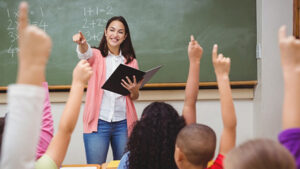Home » Commentary » Opinion » Recover and revitalise education
· IDEAS@THECENTRE
 As Australia’s 4 million school students and their educators kick off a new school year, it must be free of educational complacency for the path ahead.
As Australia’s 4 million school students and their educators kick off a new school year, it must be free of educational complacency for the path ahead.
It’s fitting that back to school coincides with this week’s UNESCO International Education Day —themed around ‘recovery and revitalisation of education for the covid-19 generation’.
Recovery and revitalisation are certainly worthy aims for policymakers in light of last year’s educational disruption. School closures undeniably resulted in learning losses and forced educators, policymakers, and parents to challenge existing schooling practices and priorities.
The task of recovery — in scope and scale — mustn’t be dismissed.
Last year, CIS research found that around 1.25 million students in the eastern states — over 40% of them — were likely to have fallen behind.
The plan of attack in NSW and Victoria is centred on marshalling a thousands-strong army of tutors to provide catch-up support. However, it’s expected this will assist only around one in five students — or around half those that will likely need it.
And while schools will welcome the help in remedying lost learning, to date there’s been limited quality assurance and considerable uncertainty over expectations of catch-up tutors.
The scale of learning loss is also likely to eclipse previous — relatively benign — predictions.
Late last year, the results of a pseudo-NAPLAN test found NSW students had fallen behind by months rather than weeks. This means that while schools were closed — around 7 weeks in NSW — students not only progressed more slowly, but effectively went backwards. This bodes poorly for Victoria’s status as the education state, since students were out of class for up to 18 weeks.
Among the key events of the 2021 education calendar will be May’s NAPLAN exams — results of which will paint a national picture of student progress following the pandemic.
But just as recovery will not be for the education policy faint-hearted, so too will be the challenge of revitalisation. This will largely hinge on learning key Covid lessons to better harness parental engagement and technology in schools.
In 2020, home-based learning gave many parents a closer look at, and interest in, their child’s schooling. CIS polling shows a majority now have more positive views on teachers and schools. A key task for educators this year will be to capitalise on this goodwill via more constructive engagement between school and the home.
In addition, 2020 saw educators embrace increased uptake of technology in schools — many with a view to entrenching a more permanent place for digitalising course content, collaboration, and assessment. While innovation is welcome, this will require smarter and more discerning applications than has been typical in the past.
The Covid-19 generation will need to muster all the available support this year to ensure they don’t become educational casualties of the pandemic.
If 2020 will be remembered for its educational disruption, 2021 must be equally characterised by recovery and revitalisation.
Recover and revitalise education